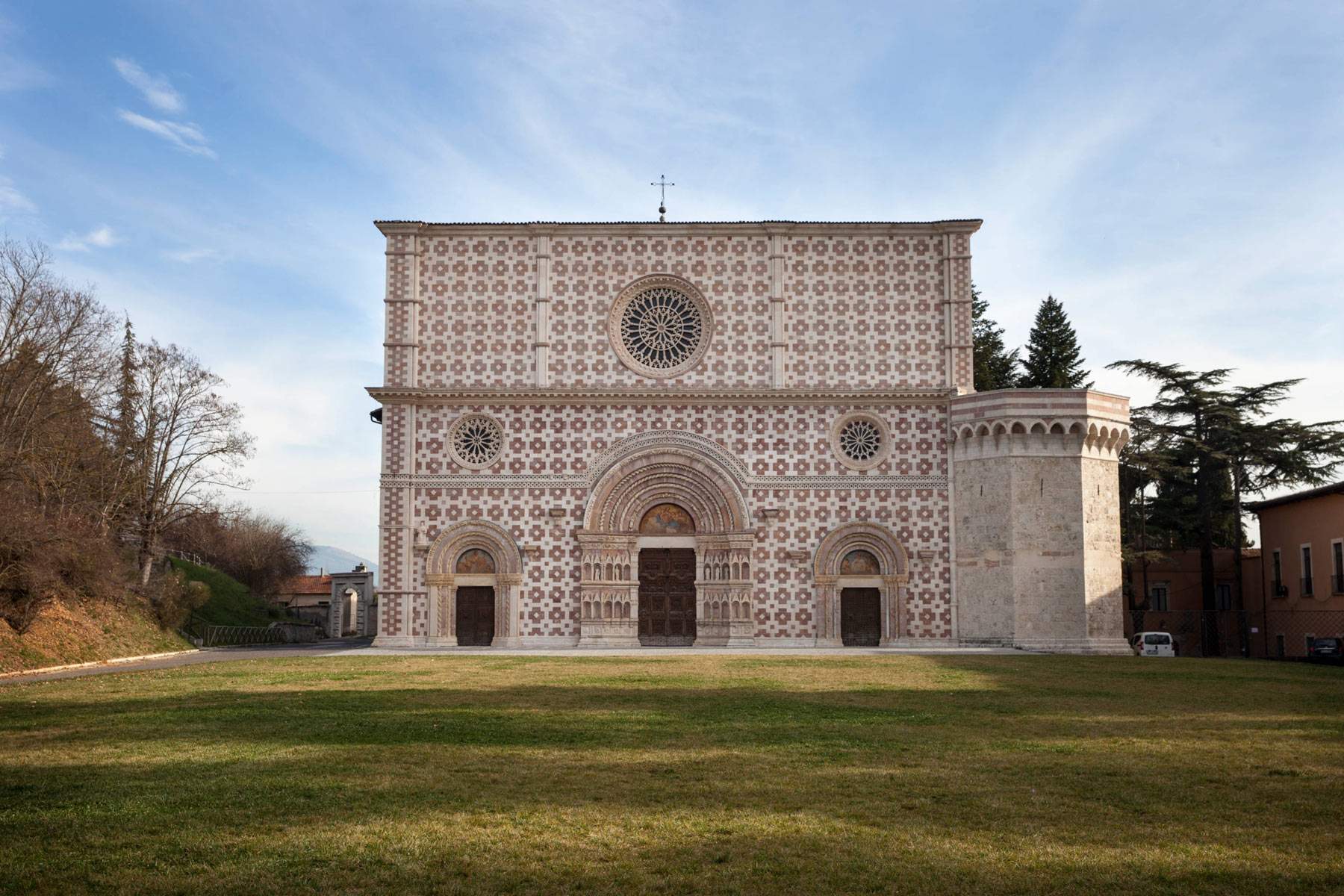L'Aquila on the roof of Europe: Collemaggio wins Grand Prix for best restoration
The Basilica of Collemaggio brings L’Aquila to the roof of Europe: the restoration of the basilica, which was devastated by the terrible earthquake in April 2009, has in fact won the Grand Prix of Europa Nostra and Creative Europe (the cultural program of the European Union), one of the most prestigious world prizes dedicated to cultural heritage. The Basilica of Collemaggio, in particular, won in the “Conservation” category, while the other two Grand Prix went to the Tramontana Network, a joint project of Italy, France, Poland, Portugal and Spain for research on tangible and intangible heritage in European mountain regions (Research category), and to the exhibition Auschwitz. Not Long Ago, a Spanish-Polish production for the 75th anniversary of the liberation of the death camp (Education, Education and Awareness Growth category).
Each of the three Grand Prix awards ten thousand euros: this year, due to the Covid emergency, the award ceremony was held entirely online. The award ceremony was attended by Mariya Gabriel (European Commissioner for Innovation, Research, Culture, Education and Youth), Hermann Parzinger (President of Europa Nostra) and Sneška Quaedvlieg-Mihailović (Secretary General of Europa Nostra). For the Basilica, therefore, this is another important recognition after its triumph at the Europa Nostra Awards, also this year.
This is the motivation with which the jury awarded the Basilica of Collemaggio: “This intervention, besides being conducted according to the highest technical and scientific standards, is also innovative, truly exemplary and all the more important for its great symbolic value. After the tragic earthquake that struck L’Aquila, the recovery of the building represents the rebirth of the entire city and is an opportunity for the community to heal the wounds caused by the earthquake. This project is an exemplary testimony to the importance of the recovery of heritage at risk.” Also announced at the event were the winner of the Public Choice Award, given to the project The ambulance of monuments (Romania) and the two ILUCIDARE special awards, which went to the project Archaeology for a young future (Syria/Italy) and TYPA - Estonian Print and Paper Museum (Estonia).
“We are very proud that the restoration of the Basilica of Santa Maria di Collemaggio is being recognized as a European example of good practice,” says Alessandra Vittorini, head of the Soprintendenza Archeologia Belle Arti e Paesaggio for L’Aquila e Cratere until last August and now director of the Fondazione Scuola dei Beni e Attività Culturali MiBACT Foundation. “Already included among the best European projects with the European Heritage Award/Europa Nostra Award 2020 last May, it received today the Grand Prix, one of the three awards for excellence that conclude the annual European awards ceremony. It is an award for the unwavering and passionate commitment that has seen the Superintendency of L’Aquila at the forefront of cultural heritage recovery for more than a decade, an award that should be dedicated to the fantastic team of women and men I have had the good fortune to direct for eight years in this complicated adventure of commitment, expertise and rebirth. And which should also be virtually extended to the many other outstanding restorations that, thanks mainly to the Superintendency and other MIBACT offices, are restoring beauty to our city and our territory.”
“The perseverance, determination and quality of a restoration whose importance has been fully grasped at the European level and confirmed with this new important recognition are being rewarded,” says Antonio Di Stefano, Deputy Superintendent for L’Aquila and Crater by the Director General for Archaeology Fine Arts and Landscape, “personally for me it is doubly a source of pride, as an Aquilan in seeing a monument that is a symbol of the city awarded and as Deputy Superintendent in seeing once again recognized the valuable work that the Superintendency has done and is doing together with the other MIBACT offices in L’Aquila and in the territory.”
The restoration of the Basilica of Santa Maria di Collemaggio (overseen by the Soprintendenza Archeologia, Belle Arti e Paesaggio for L’Aquila e cratere, both for the design and direction of the work, with architect Antonello Garofalo and art historian Biancamaria Colasacco) involved a symbolic place in the city, devastated by the 2009 earthquake. The intervention was fully supported by Eni S.p.A., following the sponsorship agreement signed in 2013 with the City of L’Aquila, owner of the Basilica. The analysis and design phase (2013-2015) was carried out with the technical-scientific support of authoritative experts from three Italian universities: Politecnico di Milano, “Sapienza” University of Rome, and University of L’Aquila (coordinated respectively by Prof. Stefano Della Torre, Prof. Giovanni Carbonara, and Prof. Dante Galeota). The works were completed in just two years (2016-2017); the careful management of the timing and phases of the construction site is also due to the efficient coordination of Eniservizi and the operational expertise of the Turin-based ARCAS company. The in-depth study and design elaboration phases, based on constant methodological and disciplinary comparison, followed by the intense implementation phase of the reconstruction and restoration, produced an example of scientific and operational rigor and, at the same time, a positive experiment in institutional cooperation. The Basilica was reopened on December 20, 2017 in the presence of Minister of Cultural Heritage Dario Franceschini.
 |
| L'Aquila on the roof of Europe: Collemaggio wins Grand Prix for best restoration |
Warning: the translation into English of the original Italian article was created using automatic tools. We undertake to review all articles, but we do not guarantee the total absence of inaccuracies in the translation due to the program. You can find the original by clicking on the ITA button. If you find any mistake,please contact us.




























